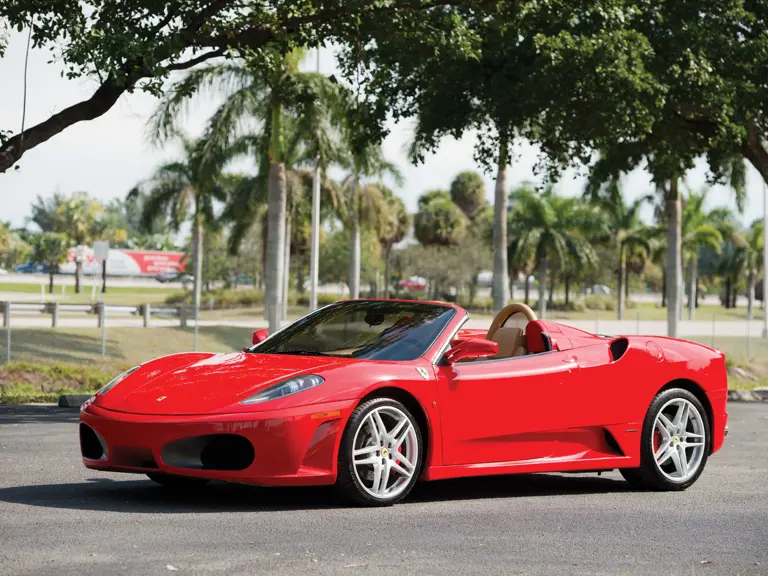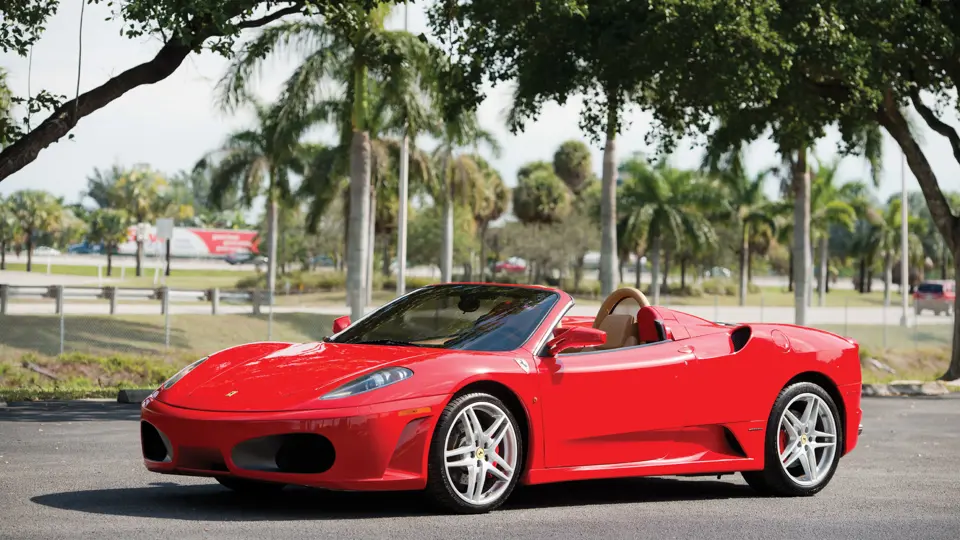The Ferrari F430 Spider F1 offered today is equipped with the powerful 4.3-liter, 483-hp fuel-injected V-8 engine with the more desirable Formula 1 racecar-inspired paddle shift transmission option. The car has red brake calipers, black face gauges with a distinctive yellow tach, Scuderia Ferrari shields on the front fender flanks, rollbars, racing-type bucket seats, with carbon dash and steering wheel inserts. The steering wheel also has a rotary switch that controls the electronic differential settings. Finished in iconic Rosso Corsa with a tan leather interior, factory alloy wheels, four-wheel ventilated disc brakes, plus many luxury-oriented conveniences; this Ferrari has been maintained and cared for in an excellent manner.
The Ferrari F430 Spider was launched at the Geneva Motor Show in March 2005, and it had to be special. Increased competition from Porsche, Lamborghini, Aston Martin, and Mercedes was putting pressure on a market place that had ever increasing choices.
The F430 Coupé had been released the previous year and was clearly a logical development from the 360M. Cosmetic changes performed by Pininfarina included larger air intakes to the front and sides, a redesigned tail and rear diffuser, and new swept headlights. These quite subtle changes were made using state-of-the-art computer aerodynamic simulation programmes used by the F1 team, and these changes helped to make the F430 more fuel efficient and stable whilst also reducing drag and lift.
It was, however, the engine that was all new. The compact, lightweight engine that could displace 4,308 cubic centimetres and develop 483 brake horsepower propelled the car to over 193-mph, with a 0– to 62-mph time of 4.1 seconds. Of course, the F430 Spider incorporated all the important new technical features of the new Ferrari. The electronic differential (E-Diff) was first developed by the Grand Prix team, and the now familiar steering wheel-mounted rotary switch, the manettino, as the F1 drivers called it, allowed the car’s set up to be changed easily and quickly.
The spider only weighed 70 kilograms more than the coupe. The superb design of the electric roof allowed the engine to remain visible under its glass cover at the rear of the cockpit. Indeed, the engine can be seen in all its glory at all times. Remarkably, the performance of the spider matched that of the coupe, and the difference in torsional rigidity was negligible.
With design features inspired by the legendary Ferrari 156 Grand Prix car that the late Phil Hill drove to the 1961 Formula One World Championship, this is an evocative, technologically cutting-edge sports car of the highest possible order.



 | Fort Lauderdale, Florida
| Fort Lauderdale, Florida


